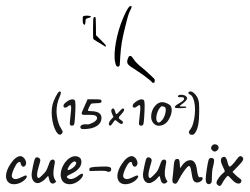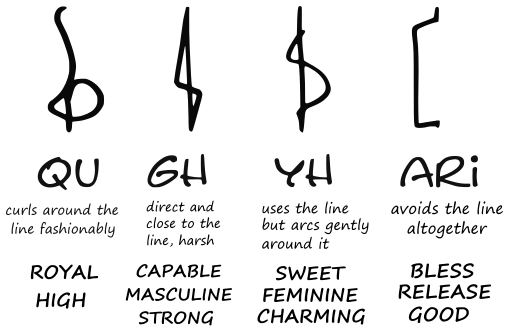I'm going to try and respond to each person/concept in separate posts.
elemtilas wrote:Maybe I'm just being dense, but...
how is it that there is no concept "8" (as you say, it does not exist), yet there is a concept "32768", which clearly demonstrates that they must have the concept "8"?
I think the term I was looking for is
digit, which up until this moment, I thought was synonymous with number.
https://en.wikipedia.org/wiki/Numerical_digit
There is no "root/digit" for 7, 8, or 9, and also 11-14. But 15 has it's own glyph and word. In other words, when we write the digit
15 in English, it is technically
10+5 on a base system. Since the "highest" digit we have is 10, we have to represent numbers higher than that by putting the numbers 1-10 together (adding zeros to substitute placement in omission).
But Etihus just skips listing 7-9 and 11-14 as digits altogether. So to communicate the number 8 for instance, you have to use 2^3, or 6+2, etc. (So yes, by Etihus' system, there's multiple ways to write/speak several numbers).
The number 32,768 in Etihus as a digit is: (6+2)^5. Here's 2 more examples:
The number 98, written/spoken in two different ways. (So far I think these are the most practical... I might have messed up on the formula for the first but the digits are correct...)
 The number 1,500.
The number 1,500. (In the most efficient way I could find.)

There's four ways to communicate the number 6, seven ways for number 11. I came up with the system much later than the conlang, and I built it by accident, so I'm not sure if it holds up just as well. All I know is that the Numberphile on YouTube who complains about conlangs using base-10 can't complain!
![:D [:D]](./images/smilies/icon_biggrin2.png)
It might seem really odd, but the speakers of my conlang as I said are much more familiar with exponents and square roots than they are the times tables like we are.
.
In explaining to Mr. Gorenc, I used the term
diacritic which seemed to click really well for him. On Wikipedia's article:
A diacritic /daɪ.əˈkrɪtɪk/ – also diacritical mark, diacritical point, or diacritical sign – is a glyph added to a letter, or basic glyph. ... Diacritical marks may appear above or below a letter, or in some other position such as within the letter or between two letters.
Just like the rest of the conlang, any digit can modify any other based on placement. So if you write the digit for 3 (in a smaller font like you would an exponent), on top of the digit 3, you get 3+3, or 6. But if you write a small 3 next to the number 3, you get 3x3, or 9. If you write 3 on top and on both sides, you get (3+3)x3 +3, which would be 21. Though that's pretty inefficient of course (you'd be saying "ki'ki-ki ki") there's better ways to communicate 21 in Etihus, but for the sake of the example.


 Śād Warḫallun (Vrkhazhian) [
Śād Warḫallun (Vrkhazhian) [ 





